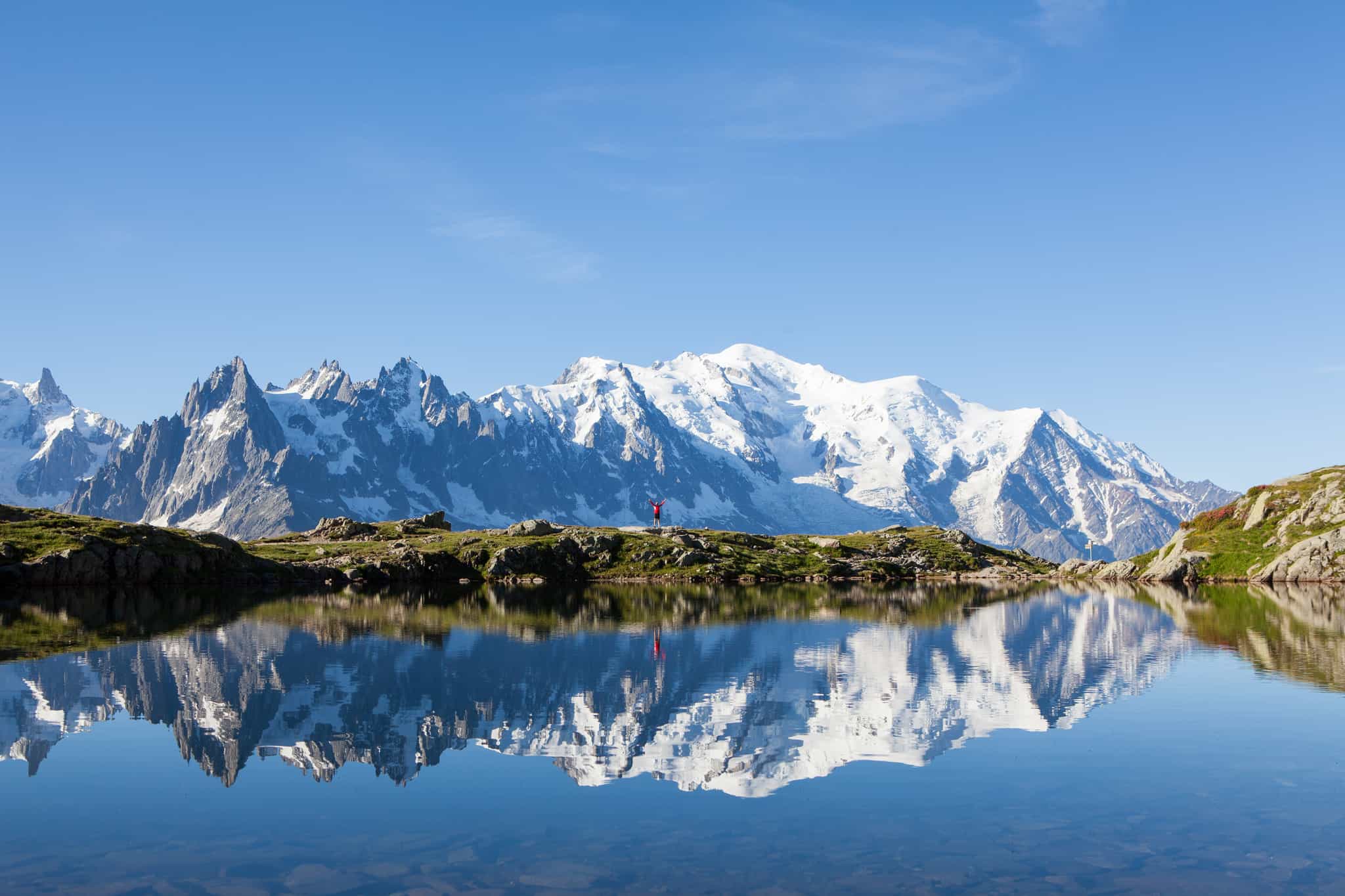
Trek the Tour du Mont Blanc: The Full Circuit
Tackle the classic TMB route through Italy, France and Switzerland, hiking among epic landscapes on one of the world’s great hikes
What's Included?
Activities & Certified Guides
All itinerary activities with experienced, English-speaking IML-certified guidesGuesthouse & Mountain hut
9 nights in remote mountain huts and guesthousesMeals
Munch on tasty food throughoutEquipment
Pillows and blankets are provided at the refuges. Trekking poles are available for hire.Small Like-minded Groups
Solo-friendly by design, join our small n’ sociable groups of up to 12 like-minded, active and outdoorsy people…
What's it like?






























Trek across three countries and through the heart of the Alps as you circumnavigate the Mont Blanc massif
Experience rustic, mountain life – remote and authentic, it's the perfect first foray into long-distance trekking
Ride the cable car from Les Houches to Bellevue and see the Alps in all their glory laid out before you
Not quite got 10 days to spare? Then check out our shorter version of this trip, Trek the Tour du Mont Blanc in a Week
Key Information
Day 1
Chamonix
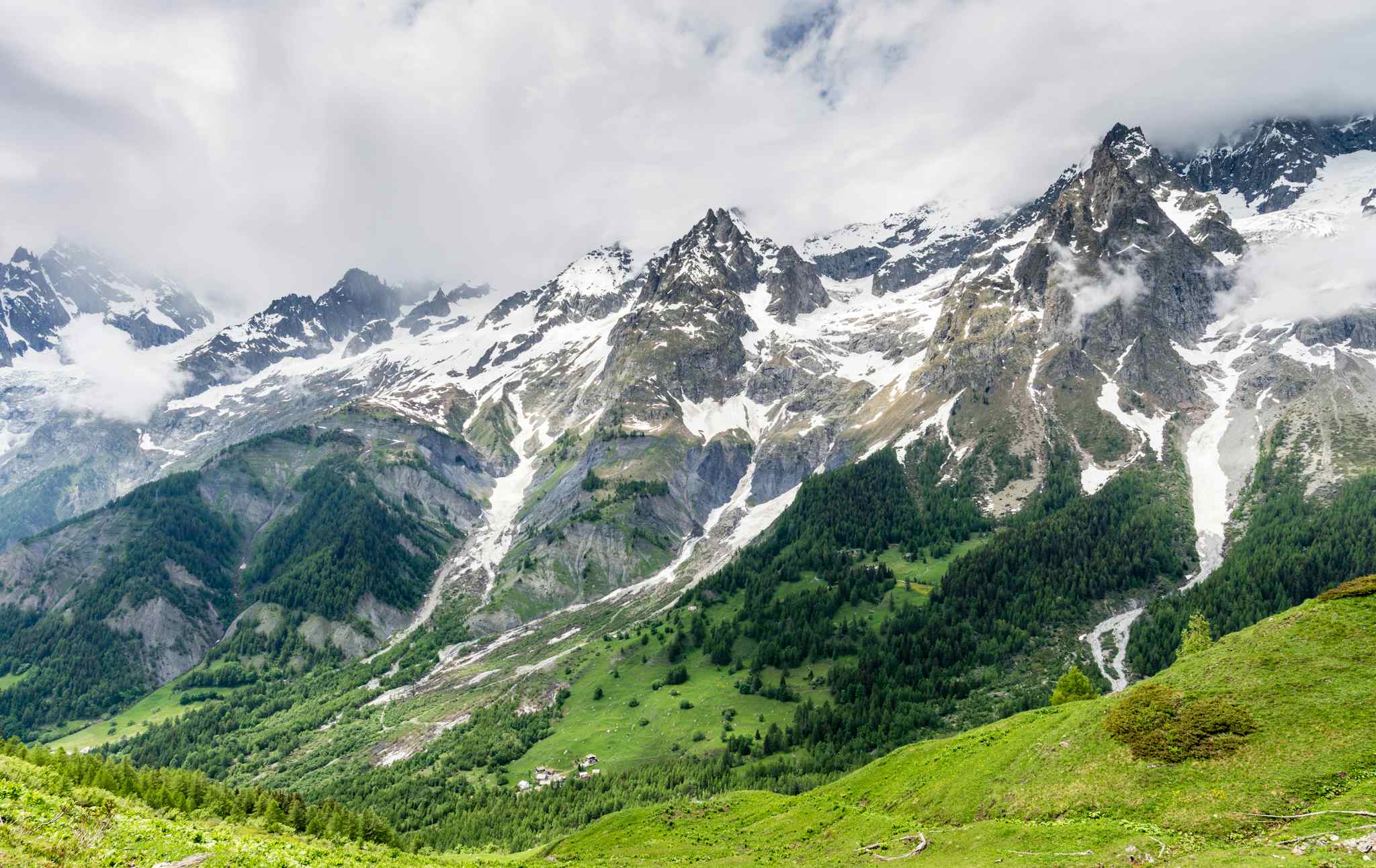
Hiking
Travel to the commune of Les Houches, the traditional starting point for the Tour du Mont Blanc and get your first view of the Chamonix Valley and the Mont Blanc Massif. Ride the cable car to Bellevue and hike to Col de Tricot, along the way crossing a suspension bridge over the waterfalls cascading from the Bionnassay Glacier. If there is adverse weather then the classic trail takes you through the more protected forest route and along the Contamines Valley. End the day in the French resort village of Les Contamines-Montjoie.
Day 2
France
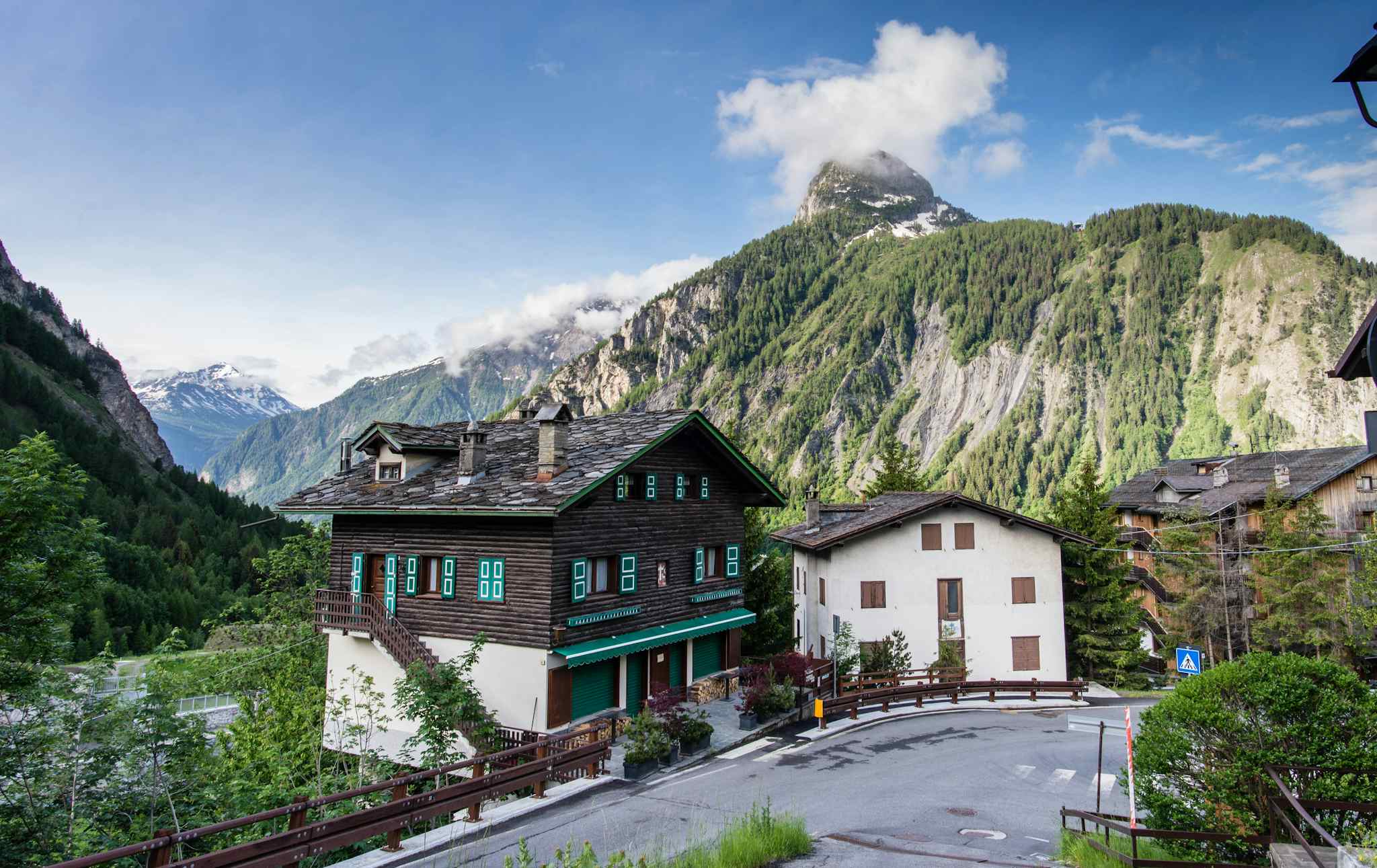
Hiking
Take a moment to explore Notre Dame de la Gorge, an ancient church with a fascinating history dating back to the 14th century. Climb up the Col du Bonhomme and walk through the nature reserve and mountain pass of Savoie County. See the Roman bridge, beautiful mountain lakes and traditional farmhouses (Le Balme), then after lunch, descend to your alpine accommodation in the small hamlet of Les Chapieux, where you'll spend the night.
Day 3
Italy
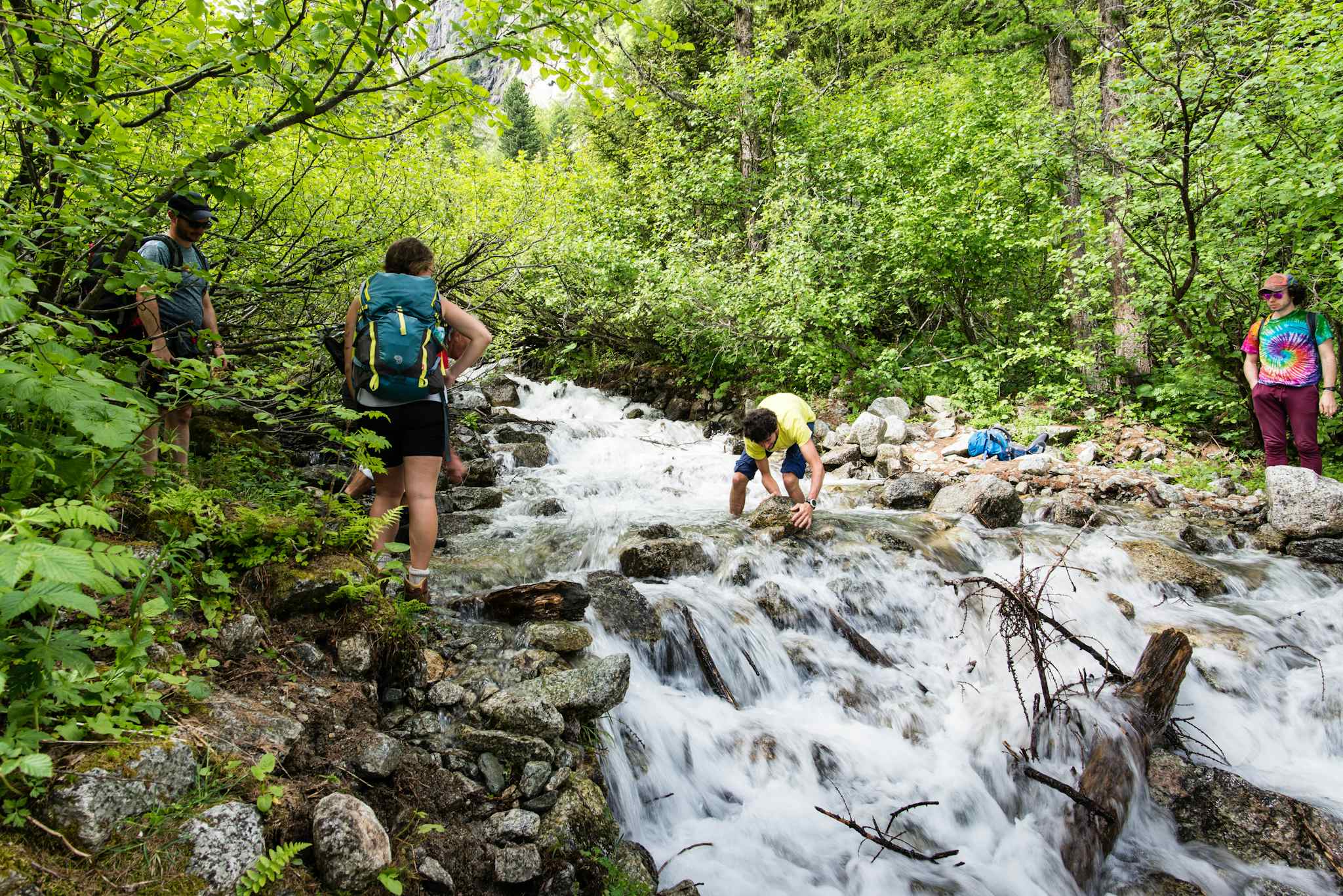
Hiking
Follow the river as it winds its way through Alpine valleys and climb up to the Col de la Seigne, 2516 meters above sea level and straddling the French-Italian border. From there, make your way back down to the Rifugio Monte Bianco, where you can rest up and take in the views.
Day 4
The high 4000’s
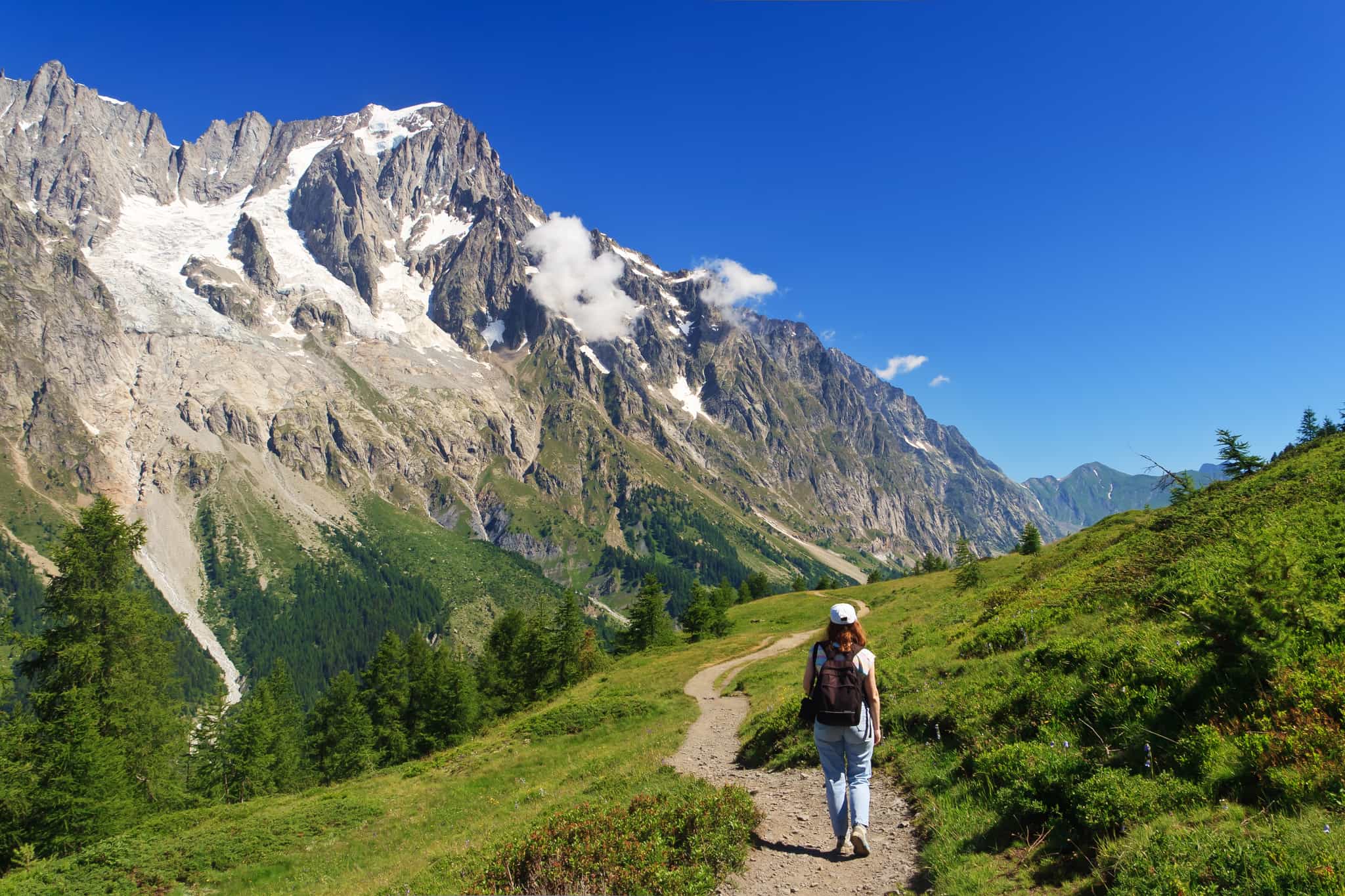
Hiking
Experience some of the route’s most beautiful views (and that's saying something) as you trek from Rifugio Monte Bianco to Courmayeur. Fall silent as you see the range’s famous 4000-meter peaks and explore the village of Courmayeur, where you'll stay tonight.
Day 5
Refugio Walter Bonatti
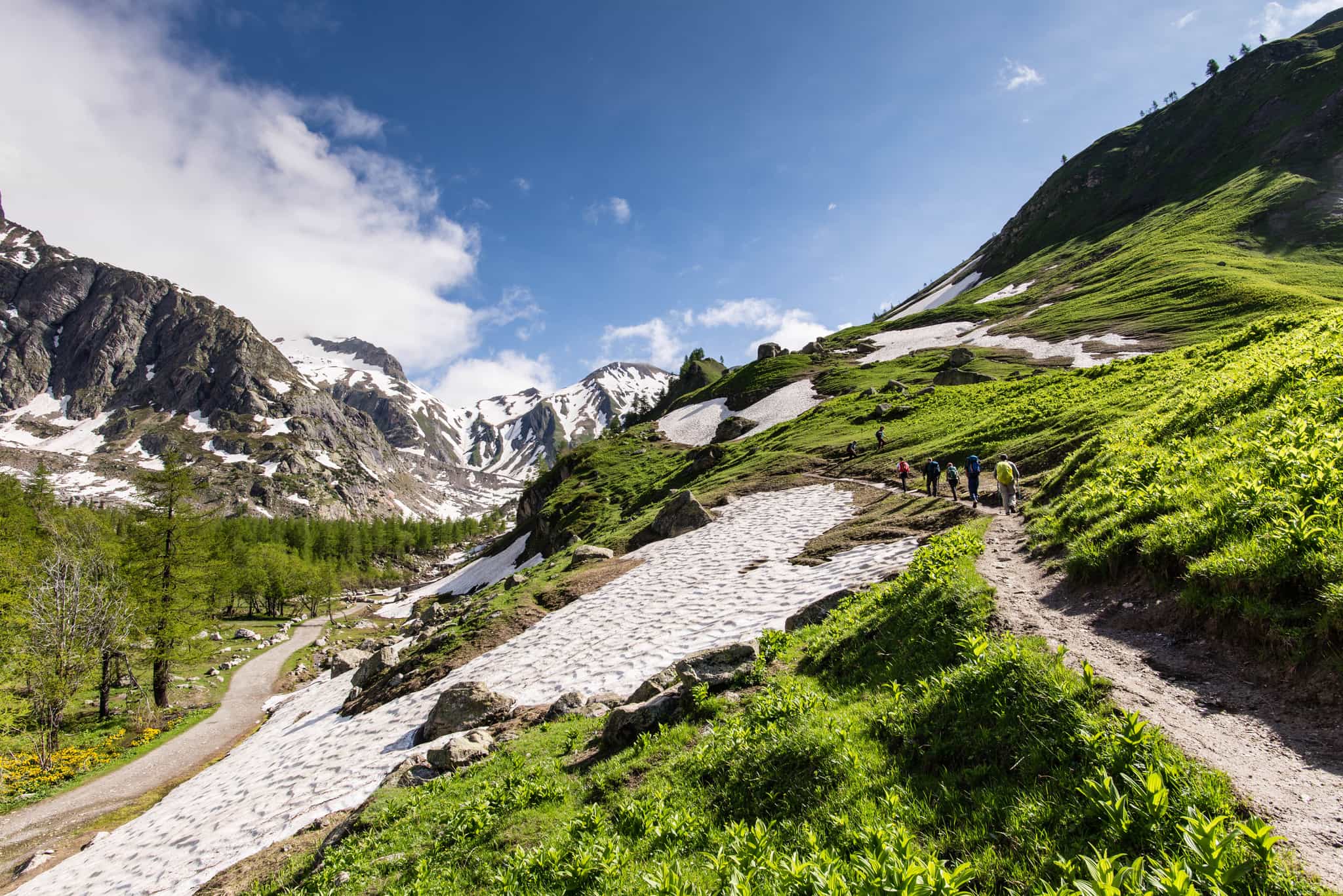
Hiking
Hike through the Val Ferret towards the Italy-Swiss border. See Mont Blanc, the Dent du Géants and the Grandes Jorasses massif towering above you, before arriving at your mountain hut, the famous Refugio Walter Bonatti with epic mountain views.
Day 6
The Grand Col Ferret
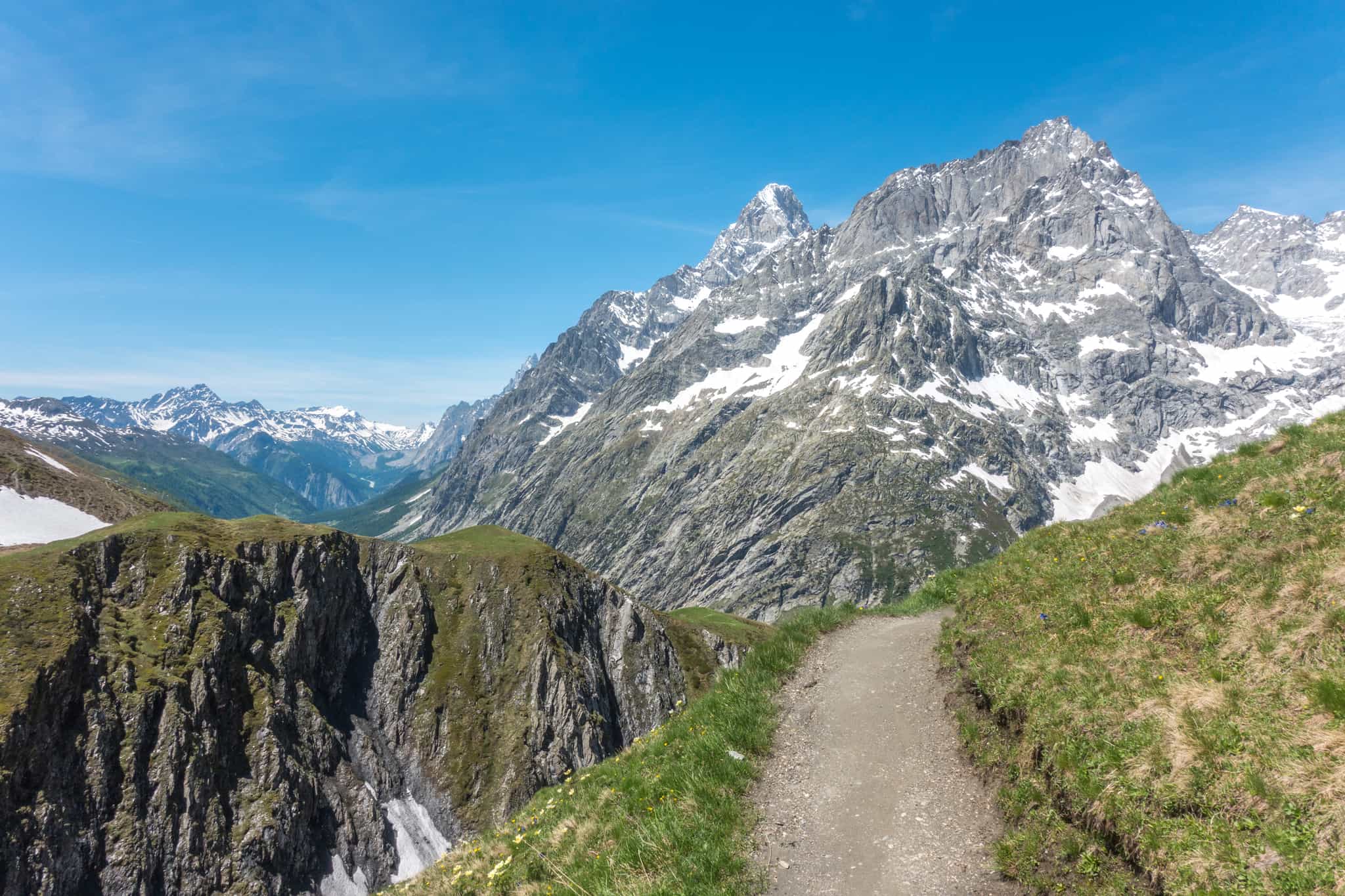
Hiking
Start the day by traversing the High Balcon Val Ferret trail, then drop down to Chalet Ferret for that last sip of Italian coffee! You'll then climb 700m to the top of the Grand Col Ferret on the Italian-Swiss border before descending to the lovely village of La Fouly where you will spend the night
Day 7
Amble through La Fouly
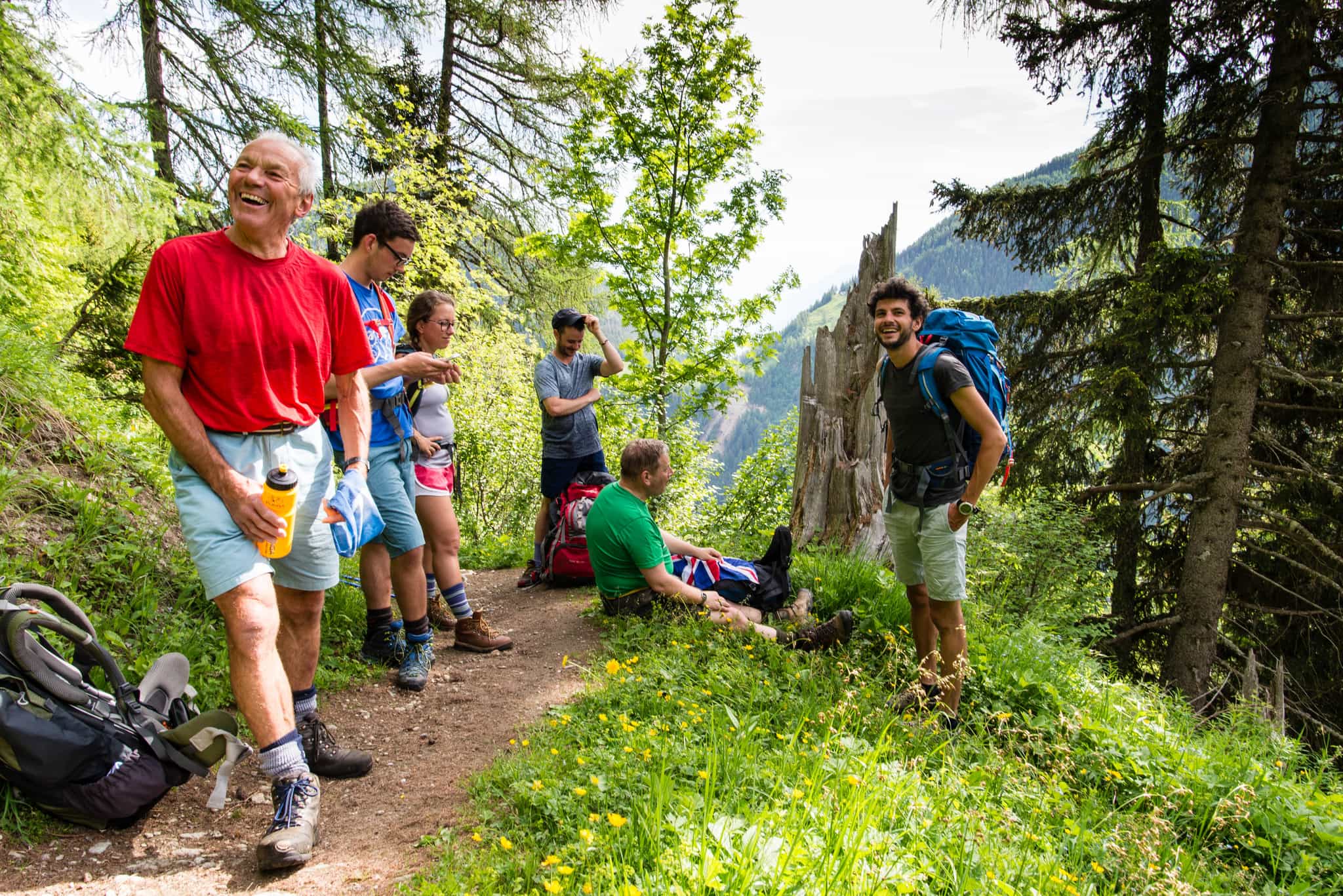
Hiking
Enjoy a (significantly) easier day as you walk through rolling, green valleys. See quaint villages and rustic farmhouses, before arriving in the picturesque Swiss mountain resort of Champex.
Day 8
Trient
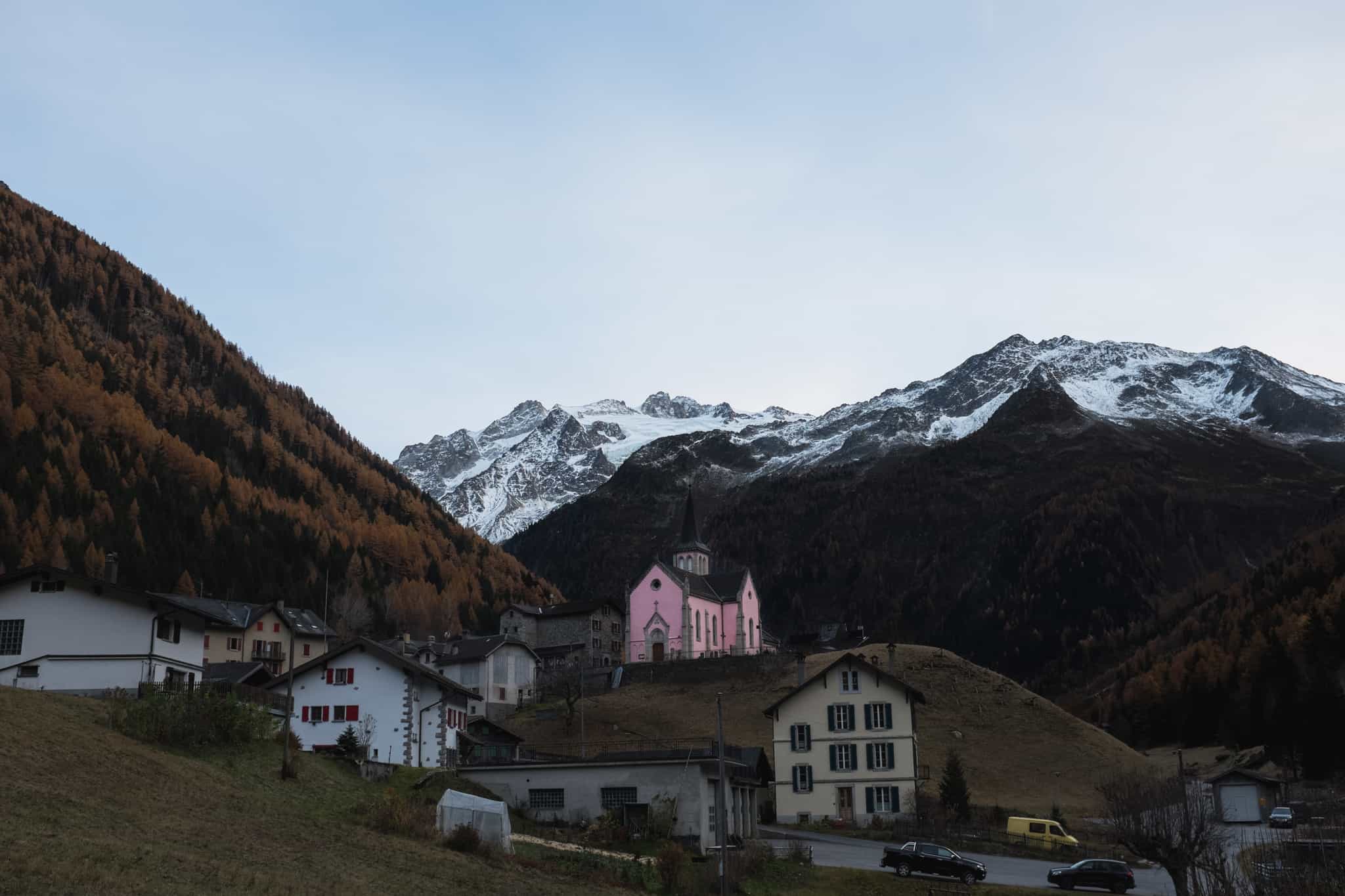
Hiking
There are two options today: take the hard route over the Fenetre d’Arpette, or the slightly easier (official) one over Bovine. Both are beautiful, but the harder route takes you to the highest point so far with views to match. Whichever chosen by your guide, you’ll end the day in the small village of Trient where your accommodation awaits.
Day 9
The Col de Balme
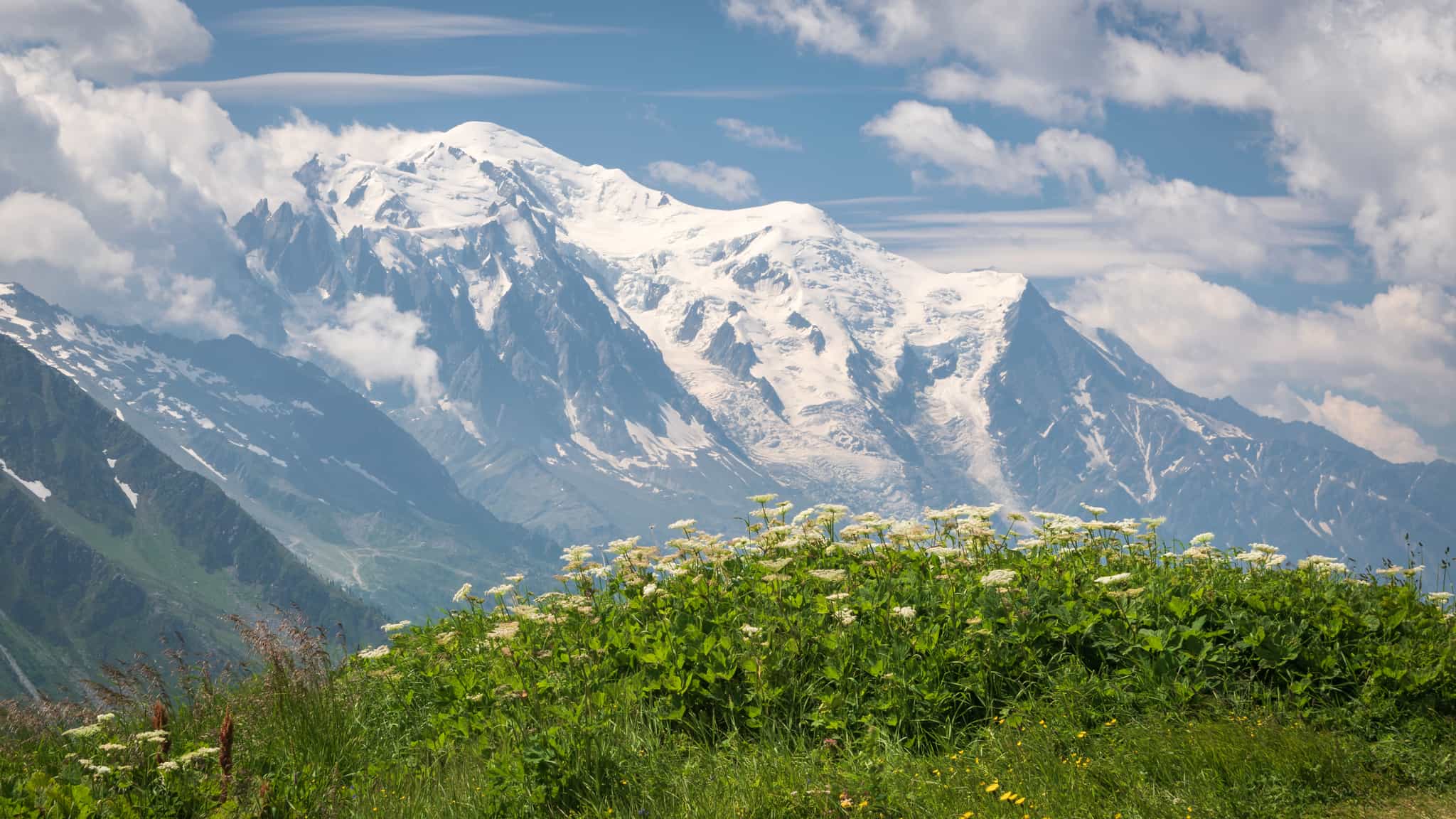
Hiking
Travel to the Col de Balme marking the Swiss-French border at an altitude of 2190 meters. From L'Aiguilette des Possettes lose yourself in the views down the Chamonix Valley to the Aiguille du Midi and summit of Mont Blanc before descending to finish the day in Tré-le-Champ.
Day 10
Back to Chamonix

Hiking
Trek over the Grand Balcon Sud and past the Lac Blanc, before heading to either Flégère or Planpraz. If you’re keen for more, hike back down to Chamonix, or alternatively ride the cable car one last time, before your epic trek comes to an end.
Day 1
Breakfast
Lunch
Dinner
Day 2 – Day 4
Breakfast
Lunch
Dinner
Day 5
Breakfast
Lunch
Dinner
Day 6 – Day 7
Breakfast
Lunch
Dinner
Day 8
Breakfast
Lunch
Dinner
Day 9
Breakfast
Lunch
Dinner
Day 10
Breakfast
Lunch
Dinner
What is the food like?
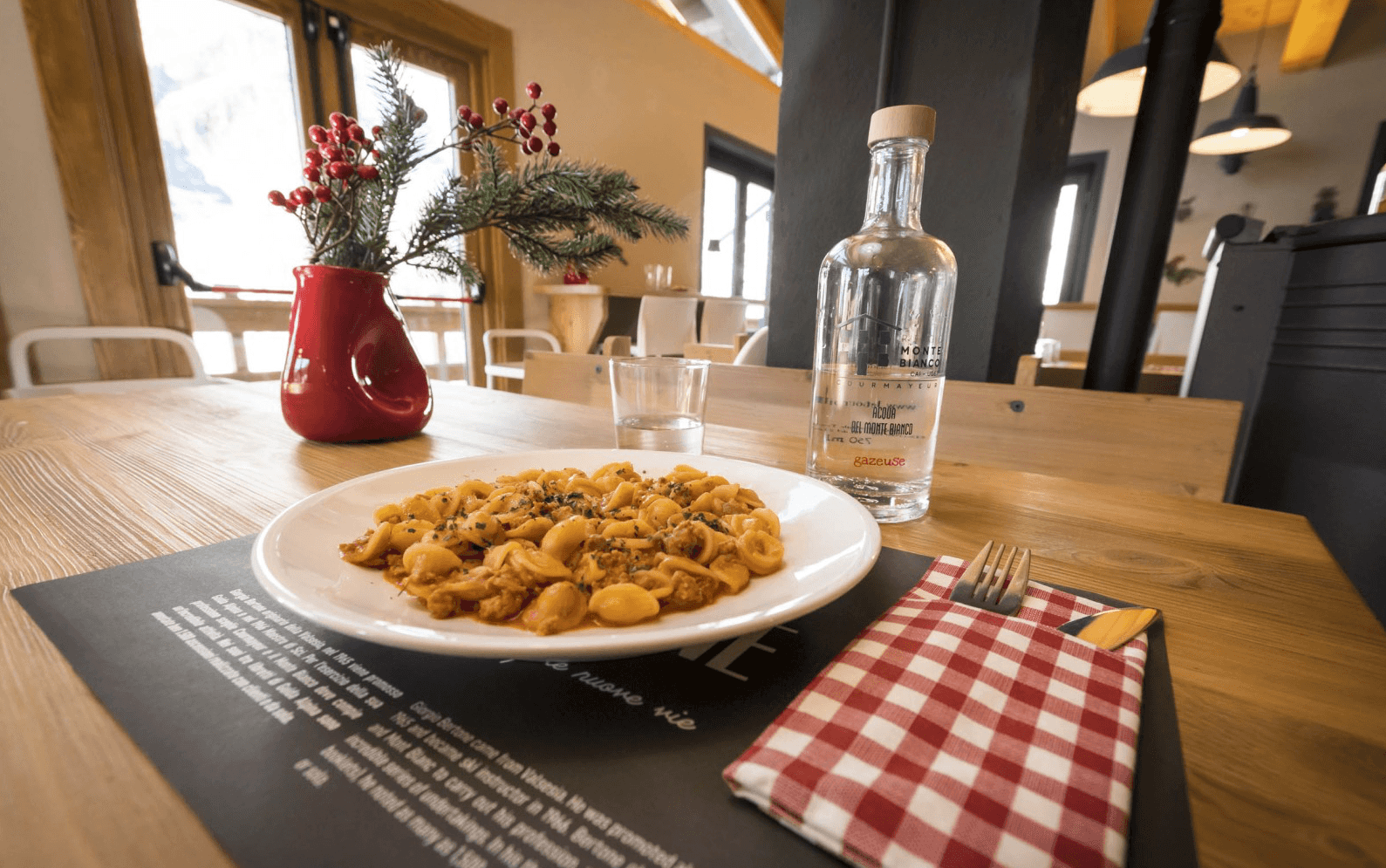
Breakfasts and dinners will be served at the refuges. Breakfasts always include coffee, bread, jam and butter. Depending on the refuge, they may also include orange juice, cereal, yoghurt, fruit, cheese and meats. Dinners are hearty and served in large portions – just what a hungry hiker needs! Typical meals include a soup starter, a main course of meat and veggies with a side of grains or pasta, and a dessert like vanilla pudding or creme brûlée. Picnic lunches will be provided each day, featuring a large main item like a sandwich or wrap, a salad, and a selection of fruit, muesli bars, chocolate, nuts, etc.
Vegetarian, vegan and most other dietary requirements (including gluten-free) can be catered for with advanced notice. Just let your host know when booking. Whilst dietary needs are sent to each refuge with the group reservations, please consider that the mountain refuges will have a limited range of choice to offer guests due to their remote locations. People with very specific dietary requirements typically choose to also bring some of their own snacks with them to ensure they have sufficient fuel for hiking up and down the beautiful mountain trails.
What is the accommodation like?
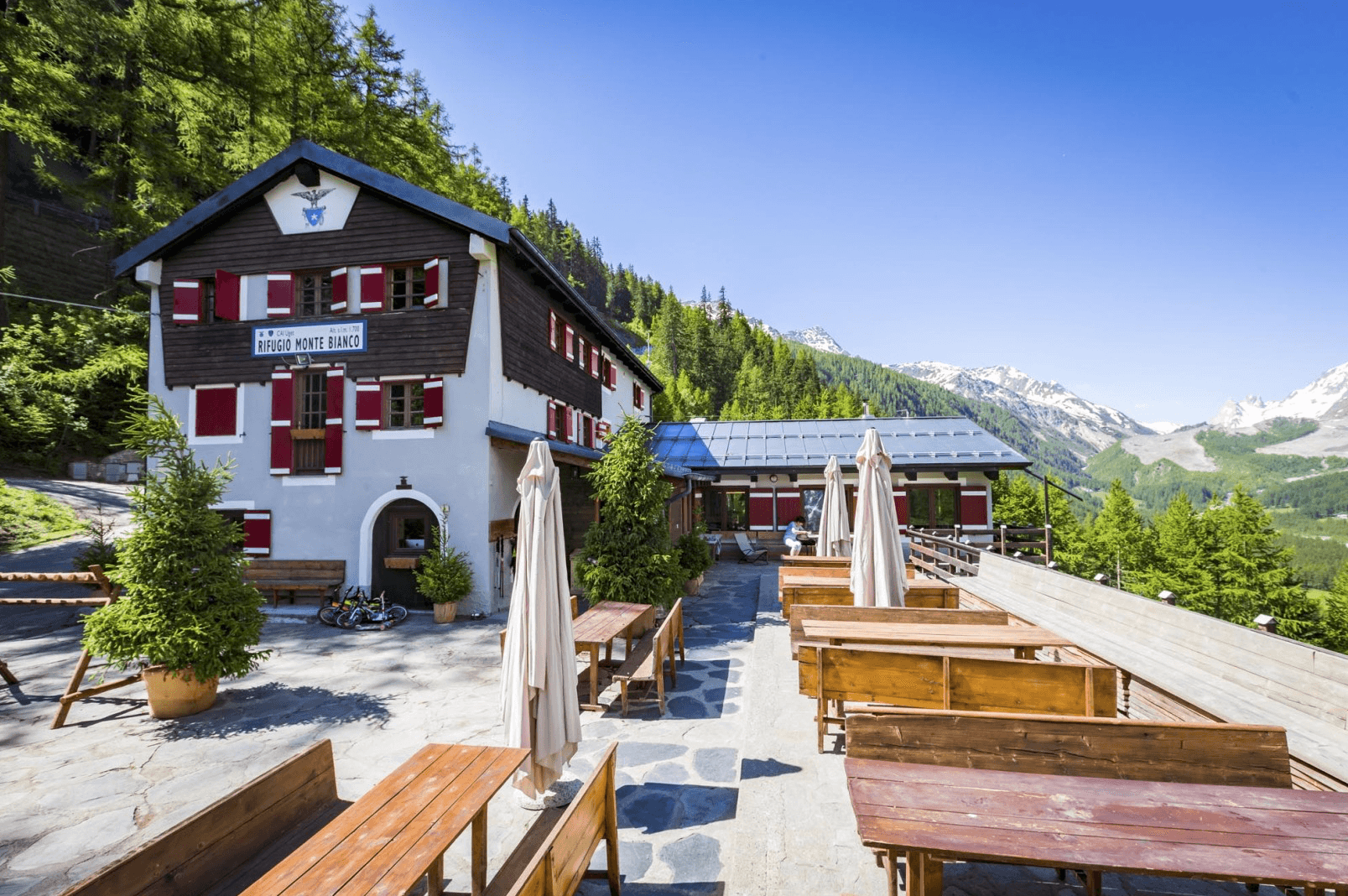
The Alps
You’ll stay in remote mountain refuges and traditional guesthouses. Groups usually stay in:
- Day 1: Gite Le Pontet (Les Contamines)
- Day 2: Refuge Mottets, Chambres du Soleil, Base Camp Lodge or Auberge Nova (Les Chapieux, Bourg St Maurice)
- Day 3: Rifugio Monte Bianco (Val Veny)
- Day 4: Hotel Croux (Courmayeur)
- Day 5: Rifugio Bonatti (Val Ferret)
- Day 6: Auberge Maya Joie (La Fouly)
- Day 7: Relais d'Arpette (Champex)
- Day 8: Refuge Le Peuty or Hotel Forclaz (Trient)
- Day 9: Gite le Moulin (Argentière)
The accommodation is simple, clean and comfortable, and there is a variety of accommodation options used throughout the hiking season. Groups typically sleep in mixed dormitory rooms of up to 20 persons, usually in bunk or single beds. They feature hot showers, running water, pillows and blankets, and a bar serving cold drinks. Most refuges also have outlets for charging your electronics, and some even have WiFi. Some refuges are more modern in style, others have a more traditional heritage, most are busy throughout the hiking season; it's the refuge's location and its remoteness that largely decides what comforts and conveniences are available. It's best to keep your expectations simple and enjoy the time on the trail to unplug from everyday life. Each of the mountain huts listed is the first choice option, but will be subject to availability. Where alternate accommodation is required, it will be of a similar style and standard.
This trip has been rated as Challenging
This trip is suitable for experienced hikers in good shape. You'll need to be able to hike 15–20km on mountain trails, with as much as 1000m of elevation gain and descent, each day. You will be carrying your own overnight pack between the refuges, (unless you book the luggage transfer service - see Optional Extras), so should be confident hiking with a 30-50L pack for multiple days. Doing some practice hikes before the trip with your pack and boots is strongly recommended to help you prepare for this adventure!
What will I need to carry?
If you would prefer to just hike with a small day pack, don't want to think about your luggage and what to pack, there is a luggage transfer service available for a fee (See Optional Extras). The luggage transportation service is available on 8 out of 9 nights: this means you'll need to carry things for just one overnight stay, on the 5th night at Rifugio Bonatti as there is no road access (although you won't need to carry all your luggage, just an overnight bag). The rest of your luggage gets transported during the day to the next destination. You'll need to pack your luggage in a duffle bag, to prevent any damage or loss to your belongings. There is a size restriction of the bags but the weight is limited to 15kg per bag.
See Optional Extras for prices.
The Tour du Mont Blanc trekking season is from June to September. Summer around Mont Blanc is generally warm and fair, but the weather can change very quickly in the high mountains, bringing cold rain and wind. Average temperatures range from 6 to 26 °C. It rains roughly half of the days each month, but storms generally pass through quickly. There can be snow on the mountain passes at the start of the season. Even in the peak of summer you can have very mixed conditions, especially when climbing over the high mountain passes above 2000m. Heatwaves have also been a feature of recent European summers. Our kit list is intended to guide you on what to pack for this trip.
The Area
Logistics
Starts
Les Houches
09:00 on Day 1
Ends
Chamonix
17:00 on Day 10
Transfers
Your adventure will begin at 09:00 on Day 1 in Les Houches, at the TMB Archway next to the tourism office, the traditional starting point of the trail. Les Houches is easily reachable from central Chamonix using the local bus network, there is also a local train service which links the valley.
You should arrive any time the day before the start date and book a hotel of your choice in the Chamonix area. There are regular buses from Geneva Airport and Geneva Bus Station to Chamonix, which take around an hour. Your host will be able to recommend an airport transfer company. Alternatively, you could also fly to Milan Airport (LIN) about three hours from Chamonix.
Your adventure ends at Chamonix at 17:00. You are free to make your own way back to Geneva or Milan airports, or Geneva railway station for those travelling onwards by train. We advise that you book any onward trains from Geneva to depart after 19:30, and any flights from Geneva or Milan to depart after 20:30. You also have the option to stay additional nights in Chamonix.
Travel options
Air travellers can fly into Geneva Airport (GVA) which is approximately one hour from Chamonix. Alternatively, you can fly into Milan Airport (LIN) about three hours from Chamonix.
For those who wish to avoid flying, why not travel by train instead? Chamonix is accessible by train via the St. Gervais-les-Bains (Le Fayet) station at the base of the valley which connects to Chamonix Mont Blanc train station. For example, take the Eurostar from London to Paris and then connect to a number of direct lines or an overnight sleeper train from Paris to St. Gervais-les-Bains, then on to Chamonix Mont Blanc station.
You can also travel to Geneva by various train routes from other parts of Europe and travel on to Chamonix from there by bus. Geneva bus station is a 5-minute walk or short taxi ride from the central train station. There are various bus services from Geneva bus station to Chamonix, the quickest option taking 1 hour and 8 minutes.
Enjoy 12.5% Off Outdoor Gear
In need of a few more items? All bookings receive a 12.5% discount to use at Cotswold Outdoor, Snow + Rock and Runner's Need.
What's available to hire?
- Trekking poles (see Optional Extras for prices)
What do I need to bring?
You'll be carrying all you need for the ten day trip on your back, so don't over pack but also don't skip the essentials. Hiking in the Alps even in the peak of summer you can have very mixed conditions, both hot and cold, especially when climbing over the high mountain passes.
KIT
- 30-50L backpack with waist belt (plus a rain cover)
- A Pack Liner or Dry Bag is also good protection in case of rain
- Sleeping bag liner (cotton or silk). This is very important as it's a mandatory requirement at the mountain refuges. Pillows and blankets are provided by the refuges.
- Sunglasses and Sunscreen (SPF 50+ recommended due to altitude)
- Hydration/Electrolyte tablets
- Preferred snacks for the trail
- Quick-dry/Travel Towel
- 2L water bottle(s)
- Toiletries and personal first aid items
- Swim suit
- Earplugs and Eye Mask (recommended)
- Cash (EUR) for drinks, snacks along the trail, tips etc.
- Plug adaptor and/or battery pack to charge electrical devices (note Switzerland uses a different standard to the rest of Europe)
- Headlamp
CLOTHES
- Waterproof Jacket (with hood) and Trousers
- Synthetic (e.g. Primaloft) or Down Puffy Jacket
- Fleece or merino pullover or sweater
- Synthetic or merino wool base layers
- Warm hat and gloves (really important in mixed weather conditions)
- Sunhat or cap
- Synthetic shirts/T-shirts and trousers (zip-off preferable) or shorts for hiking
- Comfortable clothes to wear post-hike in the refuges
- 2+ pairs of hiking socks, wool or synthetic (not cotton)
- Sturdy hiking boots or shoes (worn in)
- Comfortable light shoes for around the refuge
Luggage Transfer - Max Weight 15kg, One Bag Per Person
Payable Before Departure
Luggage Transfer - Max Weight 15kg, One Bag Per Person
…
Trekking Poles
Payable In Resort
Trekking Poles
…
Parade of Mountains
This trek is a challenge, but the beauty makes the effort worth every step. At first I was skeptical of the value-add of a guided trip vs self-guided, but immediately after day one knew I made the right choice to be led in a group with a guide. We got to see so much more varied landscapes, experience so much more adventure, eat so much more variety, and laugh so much more in the shared fun of being together as a group.
Pretend hikers. Real hike.
Do your research as I’d call this hard rather than ‘moderate’… or do it like us and do not think about it and just go for it. Very fun and challenging. A real adventure. Loved it all.
5 Star Trek the Tour du Mont Blanc: The Full Circuit
An amazing trip - would highly recommend! Great refuges, fantastic guide, and value for money. Can't wait for the next trip with Much Better Adventures!
Our Purpose
To protect our world's wild places, one adventure at a time.
Positive impact adventure travel

